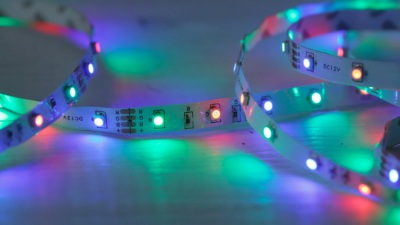In the past couple of decades, technology has drastically changed how we live. Our homes are getting smarter by the day, offering convenience and efficiency at unprecedented levels. From controlling your thermostat with a mobile app to operating your refrigerator through voice commands, there’s no denying that the digital age has arrived at our doorsteps—literally. However, with increased connectivity comes heightened risks. Cybersecurity threats and physical vulnerabilities can compromise the sanctity of our homes if we don’t take proper precautions.
So, how can you safeguard your smart home without sacrificing the advantages of technology? Let’s delve into the critical steps to protect your home in this digital era.
1. Integrate Security With Smart Home Systems
You don’t need separate systems for smart features and security; you can have both in a single, seamless package. An example of this is the integration of a Honeywell System with your Amazon Alexa device. By merging the two systems, you can use voice commands to control your home security.
From setting alarms to checking your security cameras, you can manage it all without lifting a finger. Of course, make sure you use strong, unique passwords and enable two-factor authentication to add an extra layer of protection to your integrated systems.
2. Keep Software And Hardware Updated
It’s easy to ignore those pesky software update notifications that pop up on your phone or smart home control panel.
However, delaying these updates can leave you exposed to vulnerabilities. Hackers are always looking for outdated systems to exploit. Make sure that all your devices, including cameras, door locks, and even smart light bulbs, are operating on the latest firmware and software versions.
3. Use Secure Networks And Strong Passwords
Wi-Fi networks are the backbone of a smart home. Therefore, securing your network is not just essential, but fundamental. Always use strong, unique passwords and avoid using common names or easily guessable phrases.
Regularly changing passwords can also offer an extra layer of security. Consider setting up a separate network exclusively for your smart home devices. This isolation prevents a would-be hacker from gaining access to your primary devices like laptops or smartphones through a less secure smart device.
4. Implement Multi-Factor Authentication (MFA)
Even if someone gets past your strong password, you can stop them in their tracks with multi-factor authentication.
MFA requires two or more verification steps to grant access, typically something you know (password) and something you have (a mobile device to receive a code, for example). More advanced systems might even include biometric verifications like fingerprints or retina scans.
5. Be Mindful Of Physical Security
While focusing on digital aspects, don’t overlook traditional physical security measures. Ensure that your security cameras are placed strategically to cover entry points and other sensitive areas.
Use motion sensors and alarms in conjunction with smart technologies. For example, you could set up a system where a motion sensor triggering would immediately turn on lights or start camera recording, possibly deterring an intruder.
6. Monitor Access And User Permissions
Your teenage kid may need to operate the smart door lock, but they probably don’t need access to the security camera feeds.
Limiting permissions based on user roles ensures that each family member or housemate can only access the parts of the smart home system they actually need to use. Periodically review and update these permissions, especially when someone moves out or new devices are added.
7. Stay Informed And Educated
The cybersecurity landscape is ever-changing. New vulnerabilities, hacking techniques, and protective measures are emerging constantly. Stay updated by subscribing to security newsletters, participating in online communities, or simply setting up Google alerts for smart home security news. The more informed you are, the better you can protect your home.
Conclusion
Smart homes offer incredible convenience, but they also pose unique security challenges. Fortunately, taking a thoughtful approach to smart home security can help you enjoy the benefits without the risks.
From integrating your alarm system with smart home technology for seamless operation to staying updated on the latest in cybersecurity, several strategies can help you create a smart home that’s as secure as it is advanced. Keep your digital castle safe by incorporating these best practices into your smart home setup.













[…] Smart security systems and devices like Ring doorbell cameras and security cameras offer real-time video monitoring and notifications, enhancing the security of your home. […]